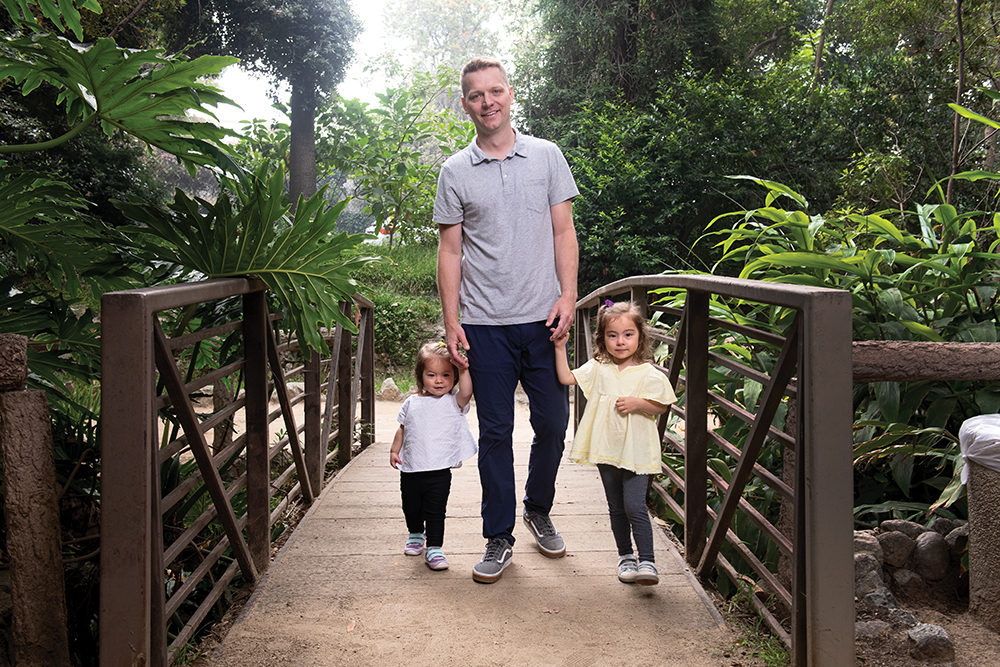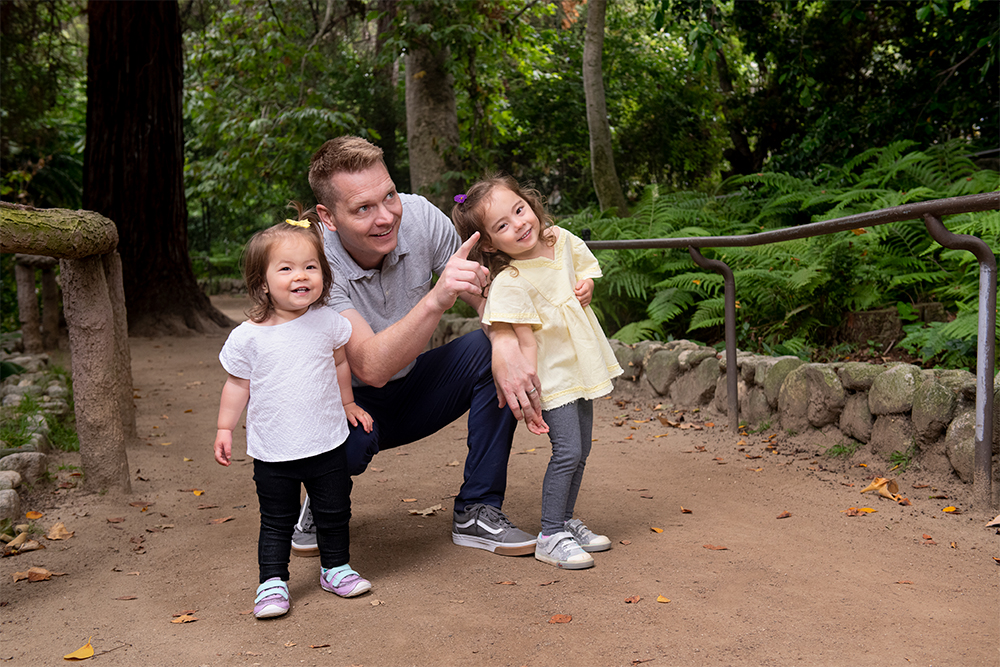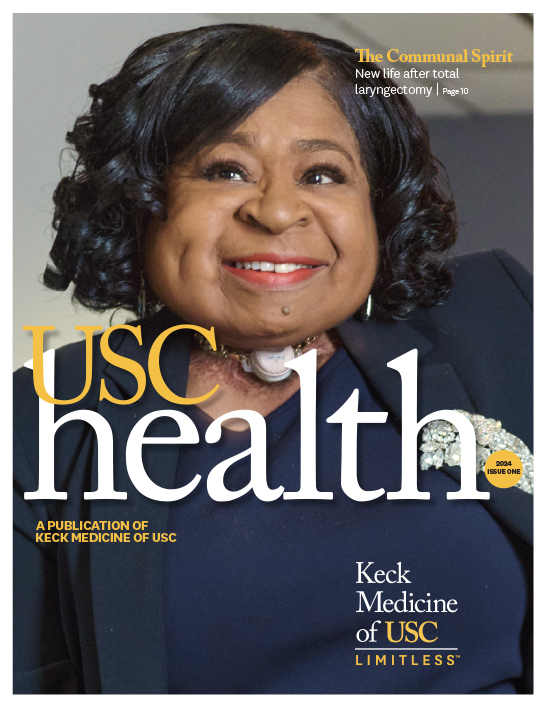
Chris Hill is back to playing with his young daughters after Raymond Hah, MD, a spine surgeon at Keck Medicine of USC, figured out what was causing his severe pain.
Years of charging basketball hoops, bombing down ski slopes and playing many other sports left Chris Hill with more than his share of wounds.
He has broken each of his limbs, had one of his shoulders repaired and has had countless scrapes, sore muscles and minor injuries.
“I was never very easy on my body,” he says, noting that he has endured a lot of pain in his lifetime. But nothing was as debilitating as the pain he experienced in the spring of 2018.
Spinal stress fractures are common in athletes
At its worst, the nerve pain in Hill’s back and legs became so intense that he could barely walk from his car to his office, a distance he estimates at a couple of hundred feet.
Before he could start working, he was often forced to lie on the floor in the fetal position, which, he discovered through trial and error, helped his pain subside.
An x-ray at the USC Spine Center revealed the source of his problem: Hill suffered from a condition called spondylolisthesis, which results from a stress fracture in the lumbar region of the spine.
This type of fracture is common among young athletes, especially those whose chosen sport involves frequent bending of the lower back.
Injured vertebrae can cause severe lower back pain
According to Raymond Hah, MD, assistant professor of clinical orthopedic surgery at the Keck School of Medicine of USC and a spine surgeon at Keck Medicine of USC, these fractures typically heal and never lead to any further problems.
In some people, however, the injured vertebra later slips on the vertebra below it, resulting in spondylolisthesis. Depending on the severity of the slip, it can cause significant pain, stiffness and difficulty walking or standing.
In practical terms, Hill describes the pain emanating from his lower back as a complete quality-of-life killer. At 36, with two young daughters and a full-time job, he already devoted less time to bone-crushing sports.
But he and his family liked to spend as much time as possible outdoors. By the time Hill saw Dr. Hah, kicking soccer balls in the park and short hikes were out of the question. Even picking up his children, the youngest of whom was just a few months old, had become a struggle.

Pain levels can determine whether surgery is the best option
“By the time he came to me, Chris had gone through a pretty rapid decline in his function,” Dr. Hah says.
Patients with spondylolisthesis may improve with more conservative measures, such as physical therapy or injections, but those treatments did not provide any sustained relief for Hill.
Dr. Hah ultimately recommended surgery because of the amount of pain Hill was experiencing, combined with his loss of function. Dr. Hah added that patients with severe spondylolisthesis tend to have excellent outcomes with surgery.
Minimally invasive spine procedures help patients recover faster
Hill had what is called an anterior and posterior lumbar fusion in September 2018. This operation is performed by making incisions on both the front and back of the patient in order to fuse the spine on both sides.
The procedure begins on the front, removing the disc and inserting a cage filled with a bone graft that realigns the spine, provides support and promotes the spine fusion.
Once complete, Dr. Hah performed a decompression of the nerves and inserted screws and rods into the vertebrae, along with more bone graft, to further stabilize the spine and promote bone growth.
I can run a mile almost as fast as I used to… I am me again.
Chris Hill, patient, USC Spine Center
Dr. Hah uses minimally invasive techniques to access the spine from the back. Employing minimally invasive techniques, he notes, has improved the experience for patients in part because it causes less damage to the back muscles.
“Patients used to be laid up a long time after a fusion,” he says. This technique reduces infection rates and allows patients to spend less time in the hospital and experience less postoperative pain.
Resuming activity after spine surgery
Hill was on his feet a few hours after surgery. One day later, he went home to the San Fernando Valley with orders to walk every day but to avoid bending, twisting or lifting.
Within a week, Hill was walking a mile or two every day without pain. Six weeks later, when Dr. Hah lifted the ban on bending and lifting things, Hill raced home to pick up his youngest daughter for the first time in months.
“That was a waterworks moment,” Hill recalls. At that moment, he says, he knew he was on the path to returning to what he had been — an active dad who hikes and skis and spends quality outdoor time with his family. A year after his surgery, he is just that.
“I can run a mile almost as fast as I used to, and go to one of these crazy workout classes for an hour and keep up. I am me again.”
Topics


